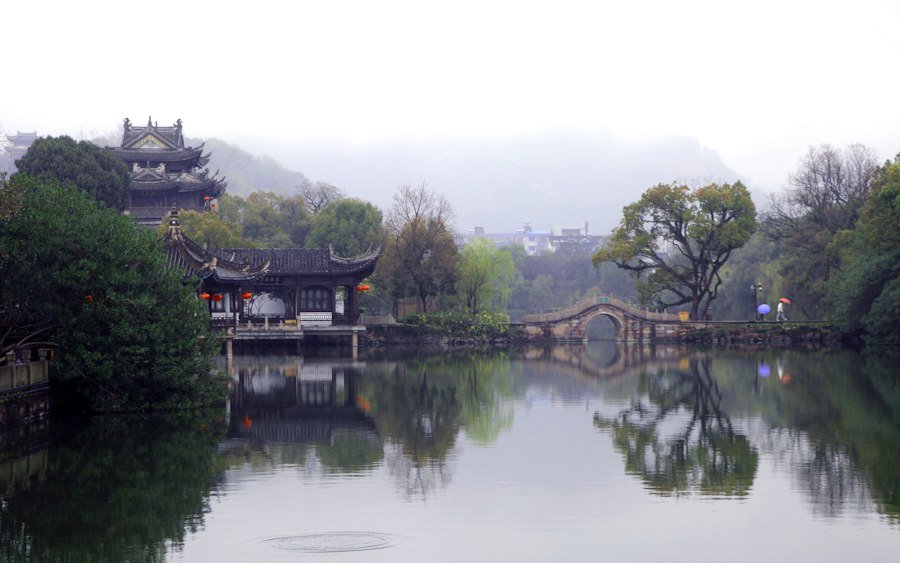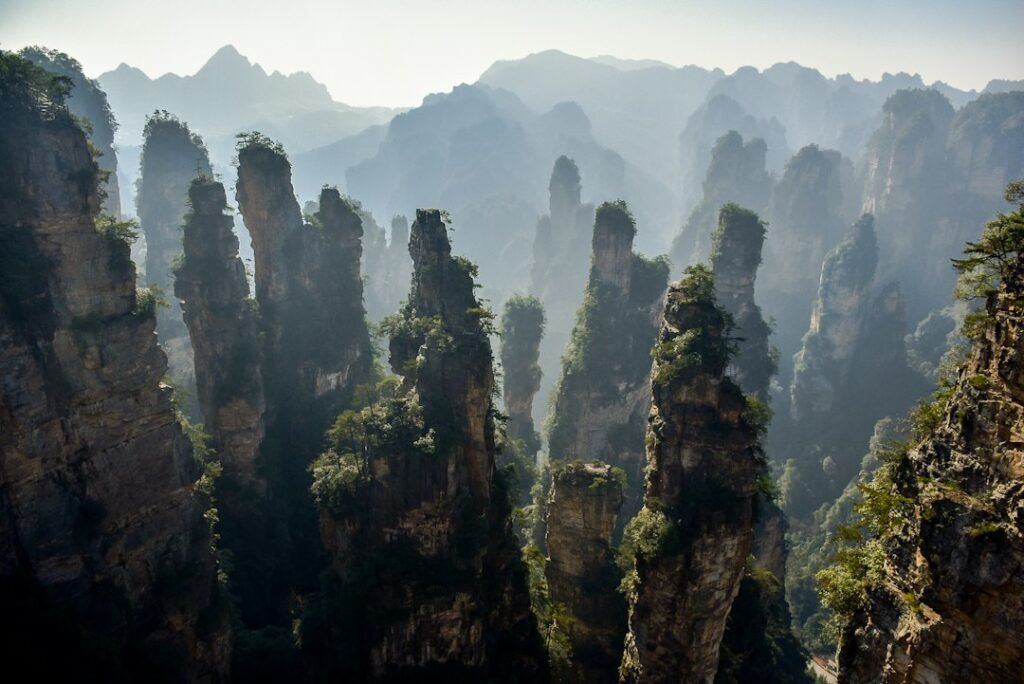China, the world’s most populous country, is known for its vast land area and diverse geography. Spanning over 9.6 million square kilometers, China is the third-largest country in the world, after Russia and Canada. Its geography is characterized by a wide range of landscapes, including mountains, rivers, deserts, and coastlines. This diverse geography has played a significant role in shaping China’s history, culture, and economy.
China’s geography has influenced its history in various ways. The natural barriers provided by the Himalayas, the Gobi Desert, and the Pacific Ocean have protected China from invasions and allowed it to develop its own unique civilization. The fertile plains along the Yellow River and Yangtze River have supported agricultural development and the growth of early Chinese civilizations. Additionally, China’s geography has influenced its cultural diversity, with different regions having their own distinct traditions, languages, and cuisines.
Table of Contents
ToggleKey Takeaways
- China’s geography is diverse and includes the Great Wall, the Yangtze River, the Himalayas, the Gobi Desert, the Yellow River, the South China Sea, the Tibetan Plateau, and the Silk Road.
- The Great Wall of China is a marvel of engineering and stretches over 13,000 miles.
- The Yangtze River is China’s longest waterway and is home to the famous Three Gorges Dam.
- The Himalayas are a majestic mountain range that includes Mount Everest, the highest peak in the world.
- The Gobi Desert is a harsh yet beautiful landscape that covers parts of China and Mongolia.
The Great Wall of China: A Marvel of Engineering
The Great Wall of China is one of the most iconic landmarks in the world. Built over centuries, it stretches for more than 13,000 miles across northern China. The wall was originally constructed as a defense system to protect China from invasions by nomadic tribes from the north. It served as a physical barrier and a symbol of Chinese strength and unity.
The construction of the Great Wall was an engineering marvel. It involved the use of various materials such as stone, brick, wood, and earth. The wall was built in sections using different techniques depending on the terrain. In mountainous areas, the wall was constructed using stone blocks and bricks, while in flat areas, it was built using rammed earth.
Today, the Great Wall is not only a historical monument but also a major tourist attraction. Millions of visitors from around the world come to see this architectural wonder every year. The wall offers breathtaking views of the surrounding landscapes and provides a glimpse into China’s rich history and culture.
The Yangtze River: China’s Longest Waterway
The Yangtze River, also known as the Chang Jiang, is the longest river in China and the third-longest in the world. It stretches for over 6,300 kilometers, flowing from the Tibetan Plateau in the west to the East China Sea in the east. The river has played a crucial role in Chinese history and economy.
The Yangtze River has been a lifeline for the Chinese people for thousands of years. It has served as a transportation route, providing access to inland regions and connecting different parts of the country. The river has also been a source of water for irrigation, supporting agriculture and food production. Additionally, the Yangtze River has been a source of inspiration for poets, artists, and writers, who have celebrated its beauty and significance in Chinese culture.
Along the Yangtze River, there are several scenic attractions that draw tourists from all over the world. The Three Gorges, consisting of Qutang Gorge, Wu Gorge, and Xiling Gorge, are known for their stunning natural landscapes and cultural heritage. The Three Gorges Dam, located on the Yangtze River, is another popular tourist destination. It is the largest hydroelectric power station in the world and has become an engineering marvel in its own right.
However, the Yangtze River also faces environmental challenges. Pollution from industrial activities and urbanization has led to water pollution and habitat destruction. Efforts are being made to address these issues and protect the ecological health of the river.
The Himalayas: China’s Majestic Mountain Range
The Himalayas, known as the “Roof of the World,” is a majestic mountain range that stretches across several countries, including China. In China, the Himalayas are located in the southwestern part of the country, forming a natural border with Nepal, Bhutan, and India.
The Himalayas in China are home to several notable peaks, including Mount Everest, the highest peak in the world. Mount Everest, also known as Qomolangma in Tibetan, is a popular destination for mountaineers and adventurers. The mountain has a rich cultural and religious significance for the Tibetan people, who consider it a sacred place.
The Himalayas have played an important role in Chinese culture and religion. The region is home to many Tibetan Buddhist monasteries and temples, which attract pilgrims and tourists from around the world. The unique culture and traditions of Tibet have been shaped by the rugged landscapes and harsh climate of the Himalayas.
The Gobi Desert: A Harsh yet Beautiful Landscape
The Gobi Desert is one of the largest deserts in the world, covering parts of northern China and southern Mongolia. It is a harsh yet beautiful landscape, characterized by vast stretches of sand dunes, rocky mountains, and barren plains.
Despite its arid conditions, the Gobi Desert is home to a diverse range of flora and fauna. It is known for its unique desert-adapted species, such as the Bactrian camel and the Gobi bear. The desert also has several oases, where vegetation thrives and provides habitat for wildlife.
The Gobi Desert presents both challenges and opportunities for tourism and development. Its remote location and extreme climate make it a challenging destination for travelers. However, its unique landscapes and cultural heritage attract adventurous tourists who are willing to explore this untamed wilderness.
In recent years, there has been an increasing interest in developing sustainable tourism in the Gobi Desert. Efforts are being made to protect the fragile ecosystems of the desert while providing economic opportunities for local communities. Eco-tourism initiatives, such as camel trekking and cultural tours, are being promoted to showcase the natural and cultural wonders of the Gobi Desert.
The Yellow River: China’s Cradle of Civilization

The Yellow River, also known as the Huang He, is often referred to as the “Mother River” of China. It is the second-longest river in China and has played a crucial role in Chinese history and culture.
The Yellow River is considered the cradle of Chinese civilization. It is believed to be the birthplace of ancient Chinese dynasties and the center of early Chinese culture. The fertile plains along the river have supported agriculture and allowed for the development of early Chinese civilizations.
The Yellow River has also been a source of inspiration for artists and poets throughout history. Its meandering course, dramatic landscapes, and ever-changing colors have been depicted in numerous paintings, poems, and songs.
However, the Yellow River also faces environmental challenges. Over the years, excessive damming, deforestation, and pollution have led to sedimentation, flooding, and water shortages. Efforts are being made to restore the ecological health of the river and ensure its sustainable use for future generations.
The South China Sea: A Strategic Waterway
The South China Sea is a strategic waterway located between Southeast Asia and East Asia. It is bordered by several countries, including China, Vietnam, Malaysia, and the Philippines. The South China Sea is known for its rich natural resources, including oil and gas reserves, as well as its importance for trade and transportation.
The South China Sea has been a source of territorial disputes and geopolitical tensions in recent years. China claims sovereignty over most of the sea, based on historical claims dating back centuries. However, other countries in the region have competing claims, leading to conflicts over fishing rights, oil exploration, and control of strategic islands.
The South China Sea is also a major shipping route, with more than one-third of global trade passing through its waters. The sea connects the Pacific Ocean to the Indian Ocean, making it a crucial transit point for international trade. Any disruption to the free flow of goods and resources in the South China Sea could have significant implications for global trade and economic stability.
The Tibetan Plateau: The Roof of the World
The Tibetan Plateau, often referred to as the “Roof of the World,” is a vast elevated region in western China. It is the highest and largest plateau in the world, with an average elevation of over 4,500 meters.
The Tibetan Plateau is known for its unique culture and religion. Tibet, which is located on the plateau, has a distinct cultural heritage influenced by Buddhism and traditional Tibetan practices. The region is home to numerous monasteries and temples, which attract pilgrims and tourists from around the world.
The Tibetan Plateau also faces environmental challenges. Climate change has led to melting glaciers, shrinking lakes, and changes in precipitation patterns. These changes have significant implications for water resources, biodiversity, and the livelihoods of local communities.
Efforts are being made to address these environmental challenges and promote sustainable development on the Tibetan Plateau. Conservation initiatives, such as protected areas and sustainable tourism practices, are being implemented to protect the unique ecosystems of the region.
The Three Gorges Dam: China’s Massive Hydroelectric Project
The Three Gorges Dam is a massive hydroelectric project located on the Yangtze River in China. It is the largest hydroelectric power station in the world and has been a source of controversy and debate.
The Three Gorges Dam was built to generate electricity, control flooding, and improve navigation along the Yangtze River. However, its construction has led to significant environmental and social impacts. The dam has caused the displacement of millions of people, flooded archaeological sites, and altered the natural flow of the river.
Despite these challenges, the Three Gorges Dam has played a crucial role in meeting China’s growing energy needs. It has helped to reduce reliance on fossil fuels and has contributed to the country’s efforts to combat climate change.
The Silk Road: A Historic Trade Route Connecting East and West
The Silk Road is a historic trade route that connected China with the Middle East, Europe, and Africa. It was a network of ancient trade routes that facilitated the exchange of goods, ideas, and cultures between different civilizations.
The Silk Road played a significant role in Chinese history and culture. It allowed for the spread of Chinese silk, porcelain, and other luxury goods to distant lands. It also facilitated the exchange of knowledge, technology, and religious beliefs between different civilizations.
In recent years, there has been a revival of interest in the Silk Road as a modern trade route. China’s Belt and Road Initiative aims to promote economic cooperation and connectivity along the ancient Silk Road routes. This initiative involves infrastructure development projects, such as railways, ports, and highways, to facilitate trade and investment between China and other countries.
In conclusion, China’s geography is diverse and vast, with its landscapes ranging from mountains and rivers to deserts and coastlines. This geography has played a significant role in shaping China’s history, culture, and economy. The Great Wall of China, the Yangtze River, the Himalayas, the Gobi Desert, the Yellow River, the South China Sea, the Tibetan Plateau, the Three Gorges Dam, and the Silk Road are all important features of China’s geography that have had a profound impact on its development. Understanding China’s geography is essential for understanding its rich history and culture.
Contact our head teacher, Chen Huimin, at info@lcchineseschool.com if you want to learn Chinese or have additional questions about our Chinese programs.
Sign up for a free trial class here.
Learn about our Internship Program in China.
Get free Chinese learning resources.
Learn about China’s 2024 Offical Holiday Schedule








